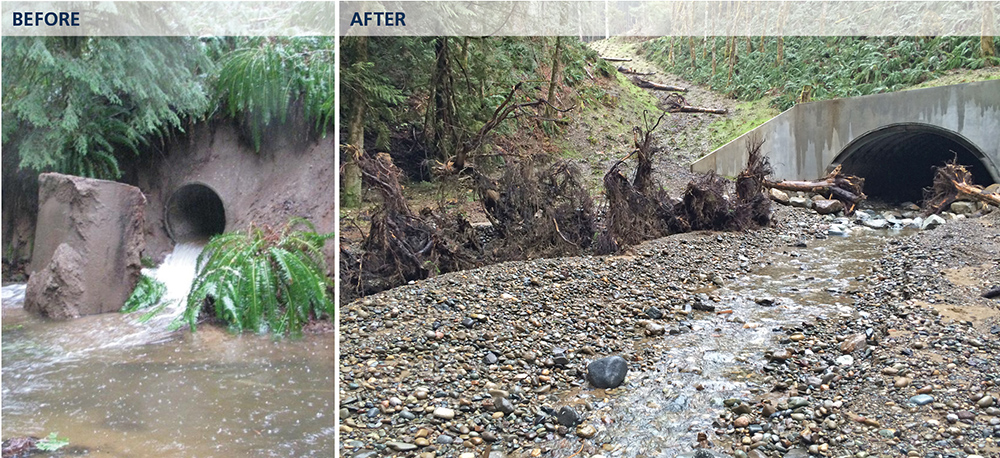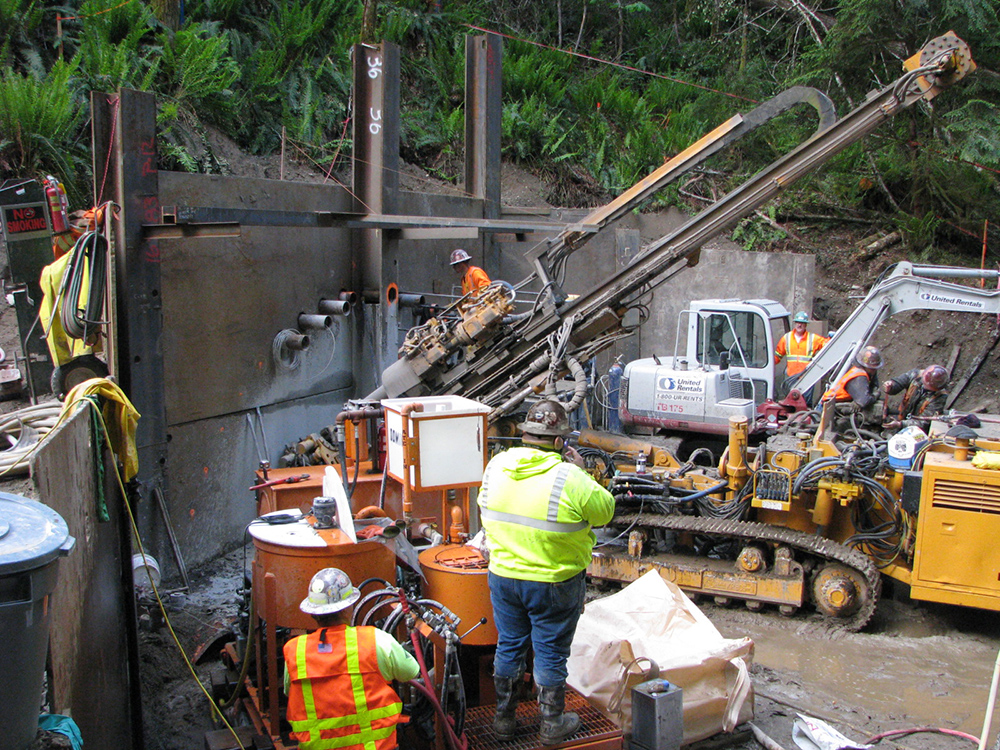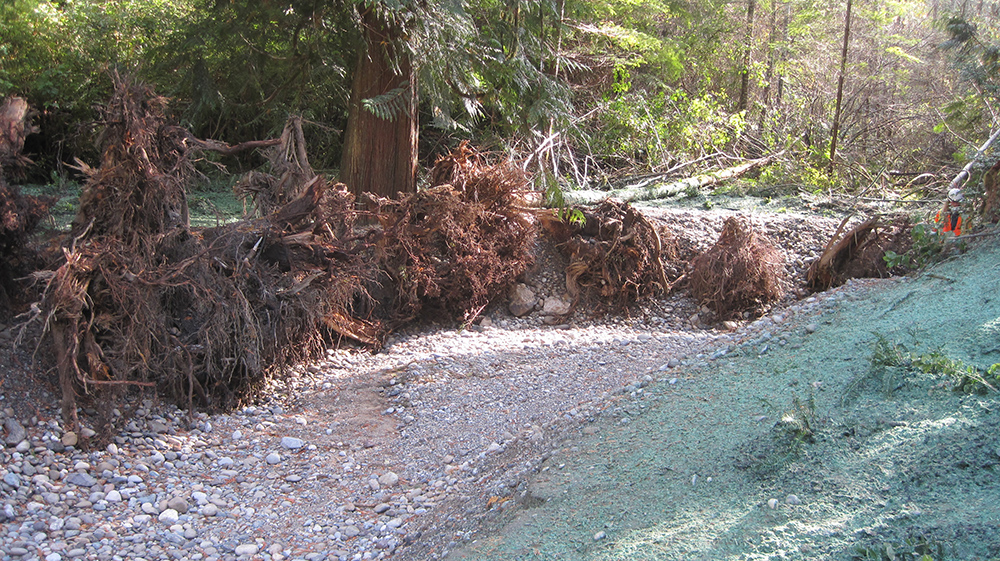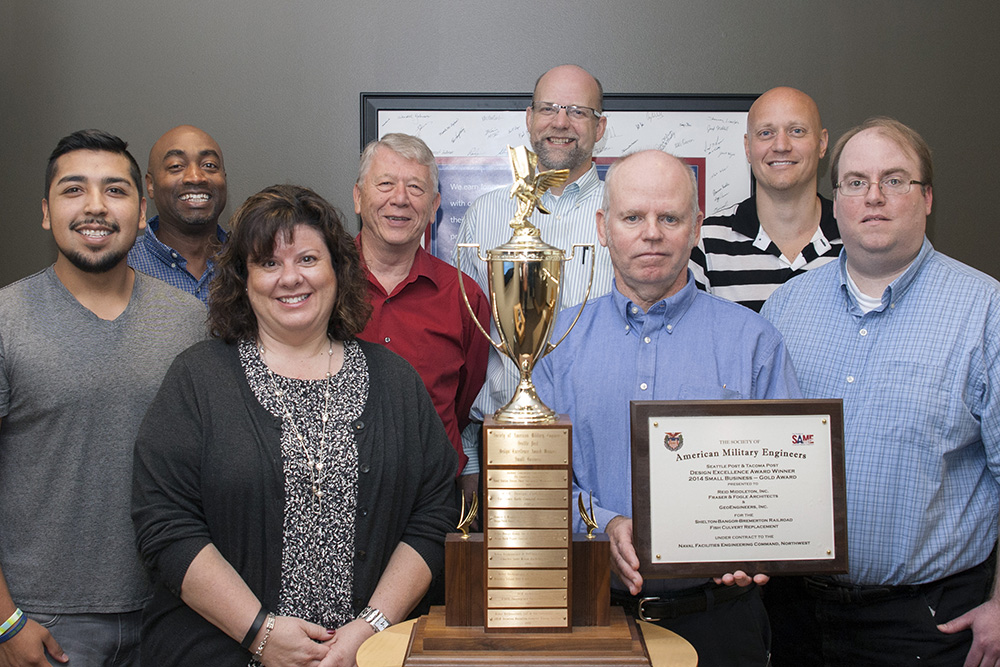As I accepted the Design Excellence award during the Society of Military Engineers
(SAME) awards banquet, I could not help thinking, “How can a culvert replacement project win a design excellence award over a variety of higher profile building related projects?” The answer is fisheries issues and recent court decisions are impacting failing culvert replacement projects and making them increasingly more complicated and costly.
Contribution to Agency’s Mission
The most significant court decision affecting culvert design is the 2013 “Martinez ruling” against the state of Washington for a “taking” under the Endangered Species Act. The taking occurred when culverts installed and maintained by state agencies, by design, did not allow unrestricted fish passage to spawning or rearing areas. The outcome of the ruling is that culverts in fish bearing creeks are required to meet the Washington Department of Fish and Wildlife (WDFW) fish passage requirements.
The SAME award project replaced an existing 48-inch culvert under a Navy railroad located in an intermittent stream tributary with anadromous fish species residing seasonally below the culvert. It was failing structurally and blocking fish passage due to a significant vertical drop and a plunge pool at the culvert outlet, preventing fish from accessing the habitat upstream. Our solution was a replacement culvert that meets the WDFW requirements for fish passage. Site work and calculations were performed, and the result was a new 20-foot diameter fish passage culvert.

The existing culvert was 250 feet long and under 70 feet of fill that supported the Navy Shelton-Bangor-Bremerton Railroad. The railroad is significant to the Navy’s mission at Naval Base Kitsap (NBK) Bremerton and Bangor, providing a key logistics corridor for delivery of vital materials. Maintaining rail traffic was an important criterion. Culvert failure could lead to settlement of the railroad embankment above and blockage of stormwater, causing flooding and slope failure and leading to an interruption to rail traffic. We decided to use trenchless tunneling in order to economically construct the new 20-foot-wide, 254-feet-long culvert under 70 feet of fill and not interrupt rail traffic during construction.
To construct the tunnel safely, the design included ground improvements using pilot-hole soil grouting prior to excavation. The tunnel was then lined with corrugated steel plates covered in shotcrete with reinforced concrete headwalls and wing walls. Our team, that included GeoEngineers, designed the site and stream restoration featuring planting plans and stream bed design to create stream channels and pools with boulders and smaller stones.

Rather than use typical large rock rubble to shore up the culvert, we designed and installed a protective retaining wall of large woody debris (LWD) upstream and downstream of the tunnel. The LWD feature has worked well to protect from erosion and also provides significant habitat complexity to the stream channel. The fish now enjoy an excellent habitat complete with shade. The LWD was sourced from the site when the access road was cut for the construction crew and equipment, adding to the sustainability and cost-efficiency of the project.

Degree of Complexity & Innovation
The project required working within the streambed so tunnel and stream improvement construction had to be scheduled during a three and a half month fish window. The trenchless technology methods made it possible to complete the project within the fish window and with a reduced cost.
By designing the culvert in an arch culvert manner spanning 20 feet in diameter, the East Fork of the Union River now has sufficient room to meander through the culvert and develop a sustaining flow pathway. The most important sustainable benefit of this project is the significant amount of additional habitat now available upstream of the tunnel for this important fishery resource to thrive.
Given the impacts of the new fish passage requirements on culvert replacement projects, these projects now require the degree of complexity and innovation to be design award winners.
Play the video below to view a slideshow of the Shelton-Bangor-Bremerton Railroad Fish Culvert project.



This was a fascinating read and it really was pretty interesting to look at all the design decisions you made for your Culvert Project. I particularly like that you did a bit of soil grouting before any excavation work. That must have really come in handy for keeping excessive soil from falling back into the hole you dug.